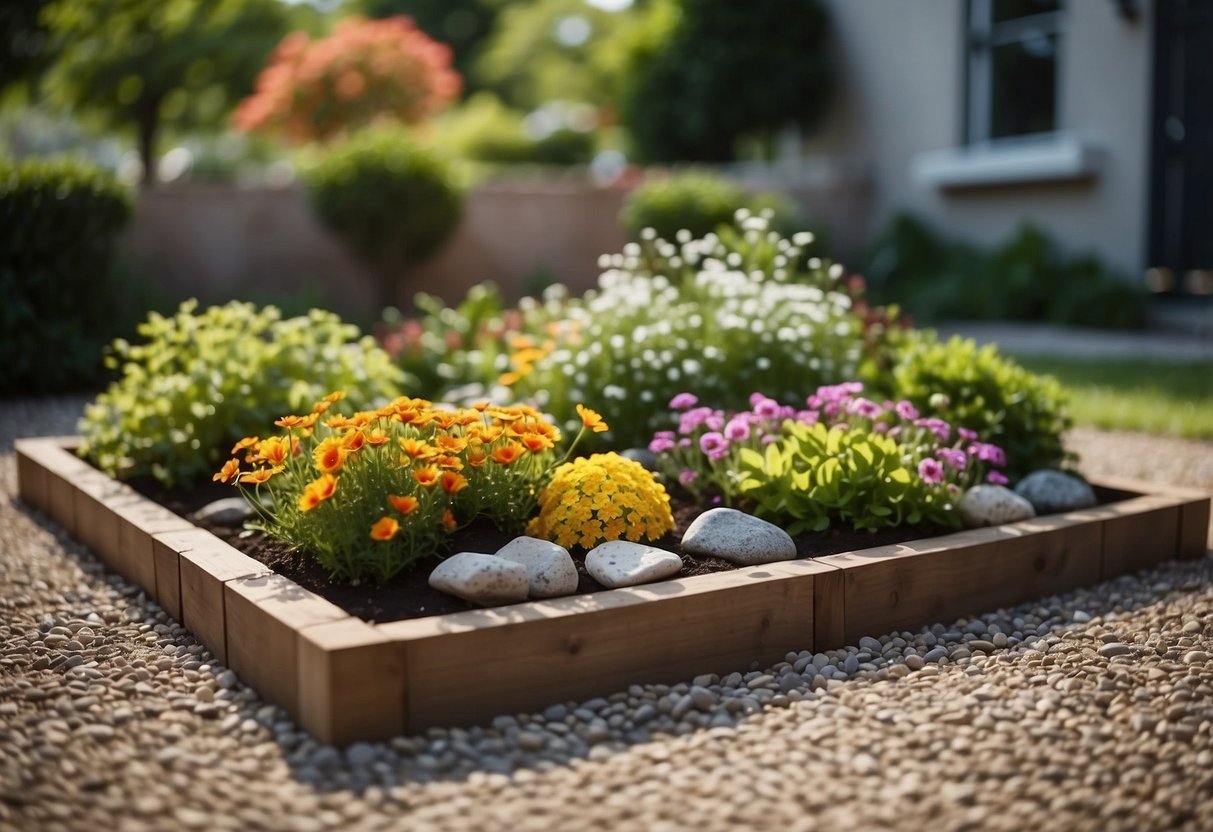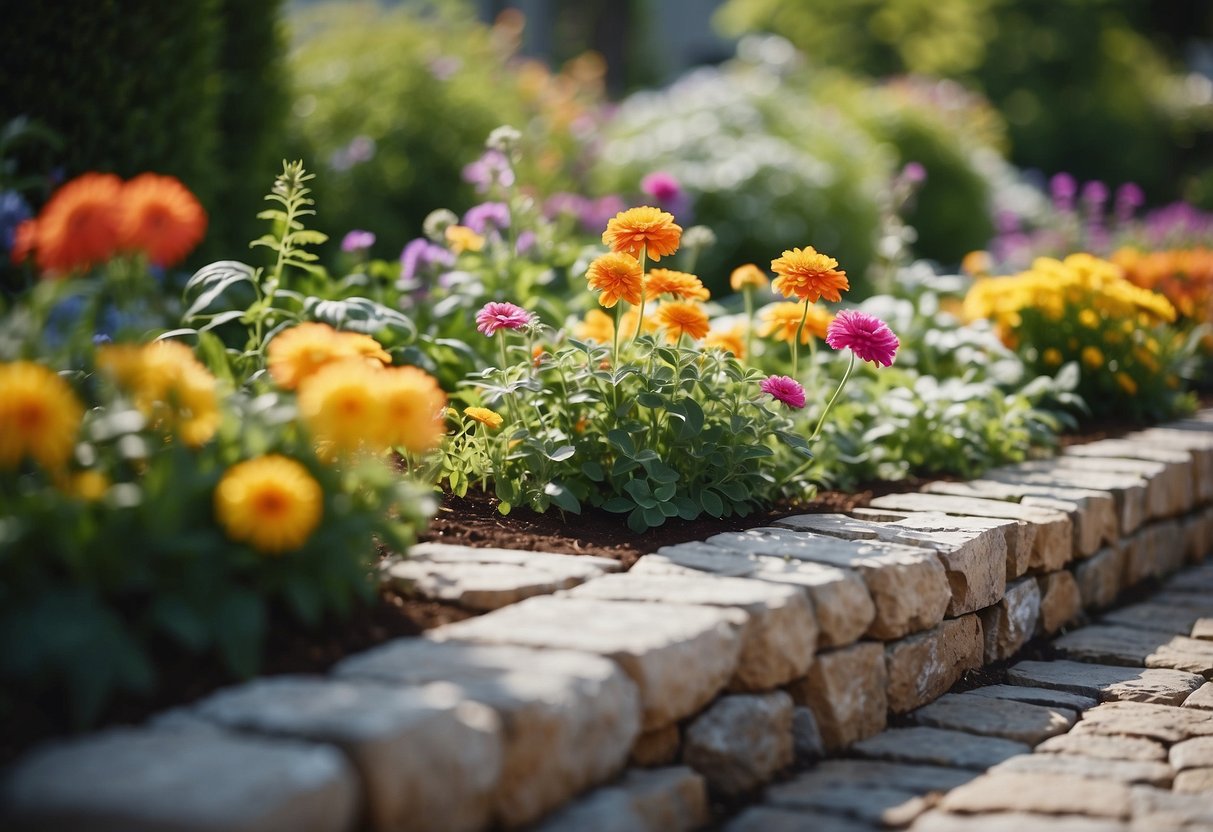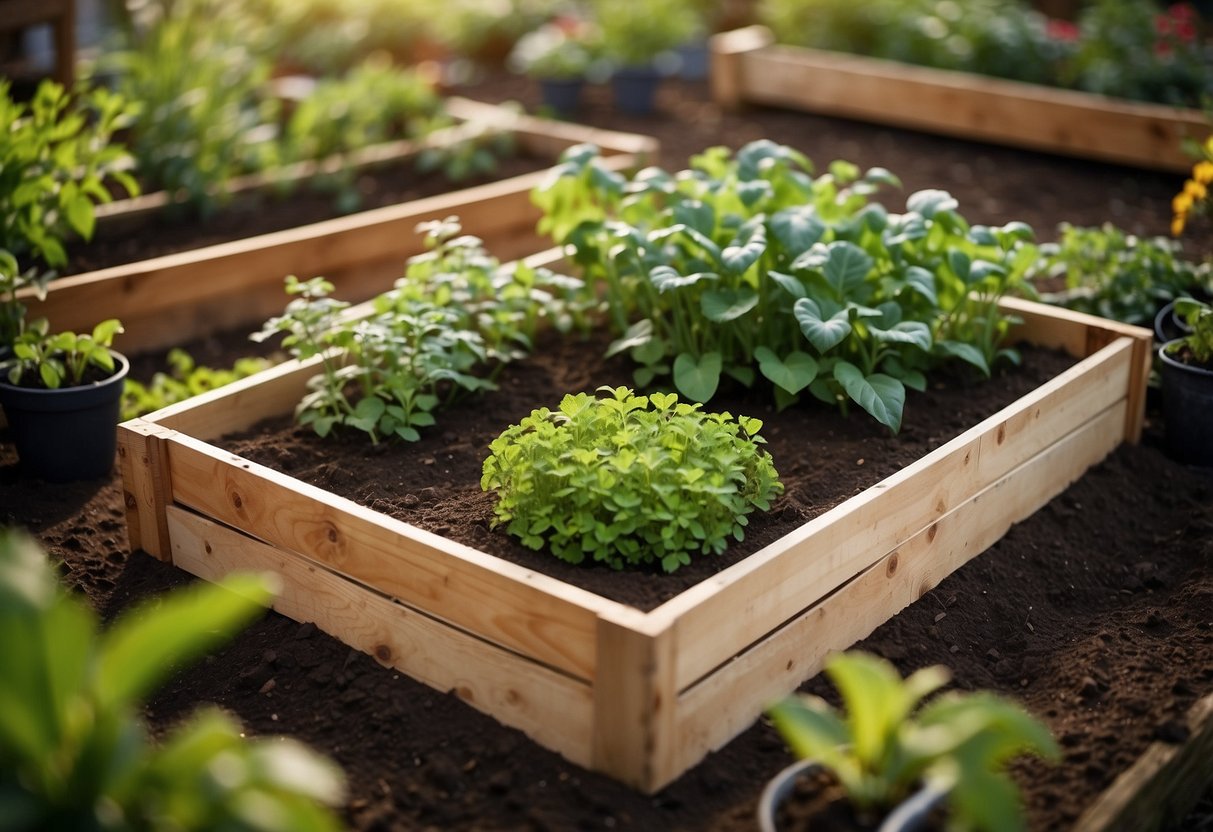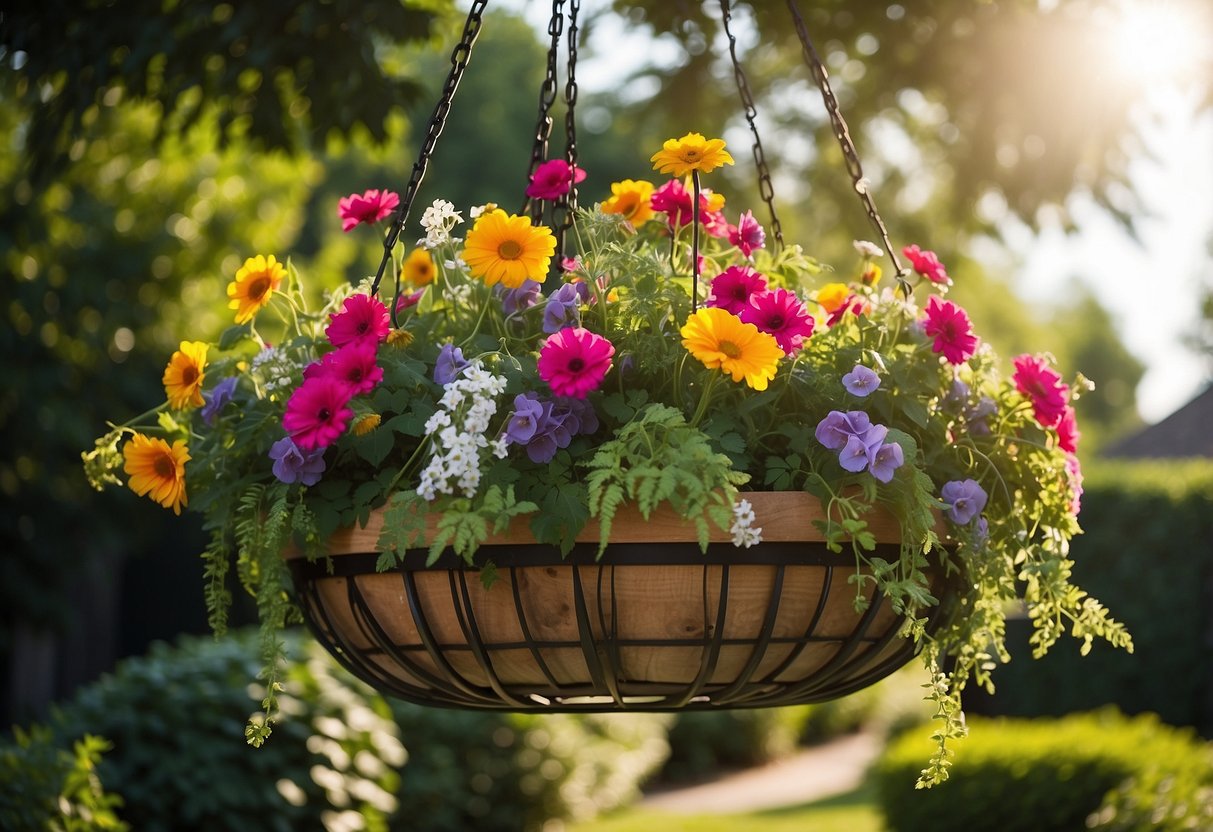Raised Garden Bed Ideas: Creative Tips for Thriving Gardens
Looking to enhance your garden space? Raised garden beds might be just what you need. They offer a versatile and customizable option for growing plants, making gardening easier and more enjoyable.

Why choose raised garden beds? They provide better soil drainage, easy access to plants, and improved soil control. Whether you’re a seasoned gardener or a newbie, raised garden beds can help you create a flourishing garden with ease.
1) Cedar Raised Bed

Cedar is a great choice for a raised garden bed. It’s naturally resistant to moisture, mold, and insects. This means your bed will last longer.
Start by cutting your cedar boards to the desired size. Aim for a depth of at least 6 inches to help your plants thrive.
Cedar garden beds are versatile and can be customized to fit any garden space. This makes them practical and attractive. For more detailed instructions, visit HGTV’s guide.
2) Tiered Herb Garden

A tiered herb garden can add beauty and functionality to your space. This type of garden has multiple levels, letting you grow more herbs in a smaller area.
You can plant different kinds of herbs on each level. For example, basil and parsley on the top, and thyme and oregano on the lower tiers.
Tiered gardens are easy to build and manage. They also make harvesting your herbs a breeze, keeping them within arm’s reach.
3) Vertical Garden Wall

A vertical garden wall is a great way to add more plants without taking up much space. You can create this by attaching a trellis or panel to a wall and hanging pots from it.
This type of garden is perfect for growing herbs, flowers, and even some vegetables. It also adds a beautiful and unique look to your garden area.
For inspiration, you can explore how to make a vertical garden with ease. Just make sure your wall can support the weight of the plants and pots. Happy gardening!
4) Galvanized Steel Bed

You might love using a galvanized steel bed for your garden because it’s sturdy and long-lasting. Unlike wooden beds, steel beds won’t rot or warp over time.
Setting one up is simple. First, lay down landscape fabric. Then, fill the bed with soil. This type of bed can handle different weather conditions well.
For inspiration, you can look at examples like the ones in “Galvanized Steel Raised Garden Beds Plans & Tutorial” or “Best Raised Metal Garden Beds”.
5) Stone-Paved Bed

A stone-paved raised garden bed can add charm to your garden. Stones are durable and can withstand harsh weather.
They also give your garden a natural, rustic feel. You can use different types of stones to create various patterns.
Building a raised bed with stones can be a rewarding project. It’s a mix of functional and decorative gardening.
6) Wooden Crate Bed

A wooden crate bed is a simple and effective idea for your garden. Repurpose old wooden crates by stacking them to your desired height.
Place the crates in a sunny spot. Line the bottom with landscape fabric for good drainage. Fill with rich soil.
Plant herbs, flowers, or vegetables to create a charming garden space. Wooden crates are durable and can be found cheaply. This makes them perfect for a budget-friendly garden project.
7) Recycled Pallet Planter

A recycled pallet planter is an eco-friendly choice. You can often find free pallets at local stores. Make sure the wood is not treated with chemicals.
Disassemble the pallet and use the wood to create a raised bed. Secure the sides with nails or screws.
Fill the bed with soil mixed with compost. This type of planter is simple and helps keep garden costs low.
You can also build it in a U-shape for easy access, making planting and harvesting more convenient. This added feature can keep pets out of your garden, ensuring your plants stay safe.
8) Hanging Basket Bed

A hanging basket bed adds a unique touch to your garden. These raised garden beds are perfect for small spaces or patios.
Use materials like macrame, recycled items, or galvanized baskets to make your bed.
Elevate your plants, making them easier to water and tend. This idea creates a beautiful, floating display.
9) Plastic Modular Bed

Plastic modular beds are an excellent choice for your garden. They are easy to assemble and lightweight. You can effortlessly move them around as needed.
These beds are also durable and can withstand various weather conditions. They won’t rot or rust, making them a long-lasting option.
Plastic modular beds can come in different shapes and sizes, allowing you to customize your garden layout. Plus, they are often more affordable than other materials.
10) Concrete Block Bed

A concrete block bed is an easy and budget-friendly way to create a raised garden.
Concrete blocks are very durable and can be arranged in different shapes to fit your space.
You can also fill the holes in the blocks with soil to grow small plants or herbs.
To get started, you just need some blocks, soil, and your favorite plants.
For more ideas, check out these creative cinder block beds.
Benefits of Raised Garden Beds

Raised garden beds offer several advantages, such as improved soil quality, better drainage, and reduced back strain. These benefits make gardening easier and more productive for you.
Improved Soil Quality
One of the major benefits of raised garden beds is better soil quality. Because you have control over the soil, you can choose the best mix for your plants. This allows you to add compost or organic matter to enrich the soil.
Using high-quality soil leads to healthier plants and better yields. You can avoid problems like heavy clay or rocky soil that often plague traditional gardens. Adding proper nutrients can also help plants grow faster and stronger.
Moreover, because raised beds are contained, it’s easier to manage soil additives. You can more easily adjust the pH level and nutrient content, ensuring your plants get what they need. With better soil control, you can grow a wider variety of plants.
Better Drainage
Another significant benefit is better drainage. Raised beds allow water to drain more effectively compared to in-ground gardens. This prevents waterlogging and root rot, which can harm your plants. The elevated design helps excess water flow away quickly.
In areas with heavy rain, raised beds keep your garden from becoming a soggy mess. This is particularly important for plants that don’t like “wet feet.” It ensures your plants get the right amount of moisture without drowning.
You can also customize the type of soil and its drainage capacity based on the specific needs of your plants. For instance, sandy soil can be used for plants that need more drainage, while a more loamy mix can retain moisture better.
Reduced Back Strain
Raised garden beds are known for reducing back strain. Because they are elevated, you don’t have to bend over as much to tend to your plants. This makes tasks like planting, weeding, and harvesting much easier on your back and knees.
The height of the beds can be adjusted to suit your needs. Taller beds can be used so you can garden while standing, which is especially helpful for older gardeners or those with physical limitations.
Additionally, with the soil being concentrated in a smaller area, most gardening tasks become more accessible and less strenuous. This convenience allows you to spend more time enjoying your garden and less time worrying about physical discomfort.
How to Construct a Raised Garden Bed

Creating a raised garden bed involves selecting sturdy materials, choosing an ideal location with good sunlight, and following straightforward construction steps. Here’s how you can get started.
Selecting Materials
Choosing the right materials is crucial. You can use wood, stone, brick, or even metal. Cedar and redwood are popular choices because they are naturally rot-resistant. Pressure-treated wood is another option but ensure it’s safe for gardening by checking for chemicals.
Remember to buy materials that can withstand the elements and last for several years. Use untreated or non-toxic treated wood to avoid harmful substances leaching into your soil. You can also opt for recycled materials to make your project eco-friendly and cost-effective.
Choosing the Right Location
Pick a spot in your yard that receives at least 6-8 hours of sunlight daily. The area should be flat to ensure even water distribution and avoid water pooling. Good drainage is essential, so avoid placing your bed in low spots where water collects.
Access to a water source is helpful, as you’ll need to water your plants frequently. Also, consider proximity to your home for ease of maintenance. If you have pets or pests, think about adding protective fencing or netting.
Construction Steps
-
Mark the Dimension: Decide on the size of your bed (e.g., 4×8 feet) and mark the dimensions on the ground.
-
Prepare the Ground: Remove grass and weeds. Lay down cardboard or newspaper to prevent weed growth.
-
Build the Frame: Cut and assemble your chosen materials using screws or nails. Ensure corners are secure.
-
Fill with Soil: Use a mix of compost, topsoil, and organic material. Aim for at least 8-12 inches of soil depth.
-
Plant Your Garden: After filling the bed, it’s ready for planting. Sow seeds or plant seedlings according to their specific needs and spacing requirements.
By following these steps, you’ll have a functional and attractive raised garden bed. Happy gardening!
Design Ideas for Raised Garden Beds

There are many ways to design raised garden beds to fit your garden’s style and your gardening needs. From tiered setups to different materials like wood or stone, and adding decorative finishes, you can tailor your garden to be both functional and beautiful.
Tiered Garden Beds
Tiered garden beds are perfect for small spaces or for gardeners wanting to grow a variety of plants. By stacking different levels, you can maximize your planting area and create a visually appealing garden.
Think about using different plant heights on each tier. For example, you can plant taller vegetables like tomatoes or corn on the top tier and smaller plants such as herbs or lettuce on the lower levels.
This method not only looks attractive but also helps with managing plant care and harvesting, as each level can be reached easily.
Wood vs. Stone Designs
Choosing between wood and stone for your raised garden beds depends on your style and how much work you’re willing to put into maintenance.
Wood Designs: These are easier to build and generally cheaper. Cedar and redwood are excellent choices due to their natural resistance to rot. You can find ideas like a raised garden bed made of cedar boards for inspiration. Be sure to use untreated wood to avoid chemicals leaching into your soil.
Stone Designs: Stone beds are sturdy, long-lasting, and give a classic look. They require more effort to construct but offer durability without the need for frequent replacement. Stones like bricks, concrete blocks, or natural rocks add visual texture to your garden.
Decorative Finishes
Adding decorative finishes to your raised garden beds can make your garden a focal point in your yard. Paint your wooden beds in bright colors to match your garden’s theme. Adding trim or molding gives a polished look.
You can also use materials like galvanized metal or galvanized troughs for a modern, rustic vibe. Consider incorporating trellises or arches to support climbing plants and add height to your garden.
Another idea is to use decorative stones or pebbles around the base of your raised beds to create neat pathways or borders, enhancing both aesthetics and functionality.







